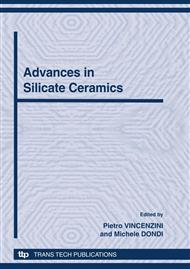p.114
p.120
p.126
p.135
p.145
p.153
p.159
p.165
p.176
Nano-Sized Metal Oxide Modification Applied in Microfiltration Membrane Technology
Abstract:
Membrane surface modification is the important method to decrease membrane fouling. Recent efforts have been made to develop the hydrophilic modified ceramic membrane with nano-sized inorganic coating in our research group. In the modified membrane, the nano coating does not form a separating layer, just distributes uniformly on the surface of the membrane pore wall. It results in that: (1) if the feed is water, the water flux of the modified membrane is higher than that of the unmodified one despite the fact that the mean membrane pore size decreases after the modification; (2) if the feed is oily emulsion, the steady flux is obtained in a short time and keeps in the following time. The flux is far higher than that of the unmodified one because the hydrophilic nano coating prevents the cake from forming on the membrane surface. The nano-sized metal oxide modification application in the membrane technology not only expands the newly research area of the membrane technology but also makes the modified ceramic membrane have a good perspective application in the industry. This paper will introduce the development of the modified membrane with nano inorganic coating and give a clear future research direction.
Info:
Periodical:
Pages:
145-152
Citation:
Online since:
October 2010
Authors:
Keywords:
Price:
Сopyright:
© 2010 Trans Tech Publications Ltd. All Rights Reserved
Share:
Citation:


